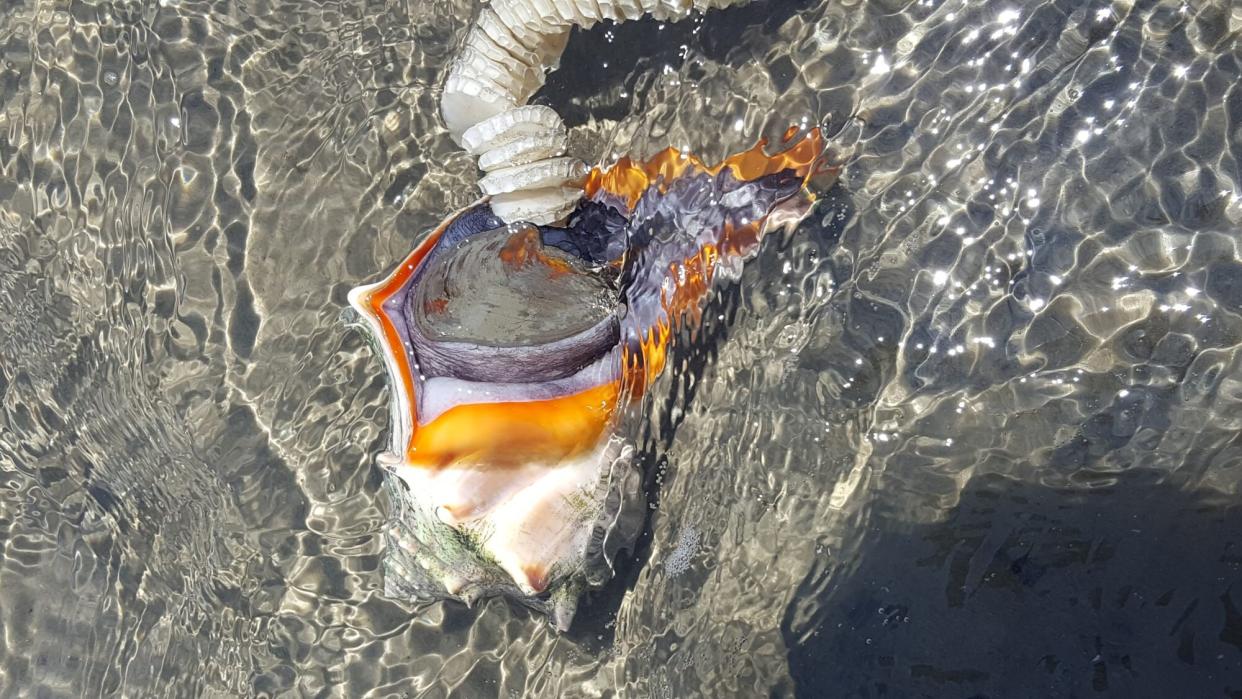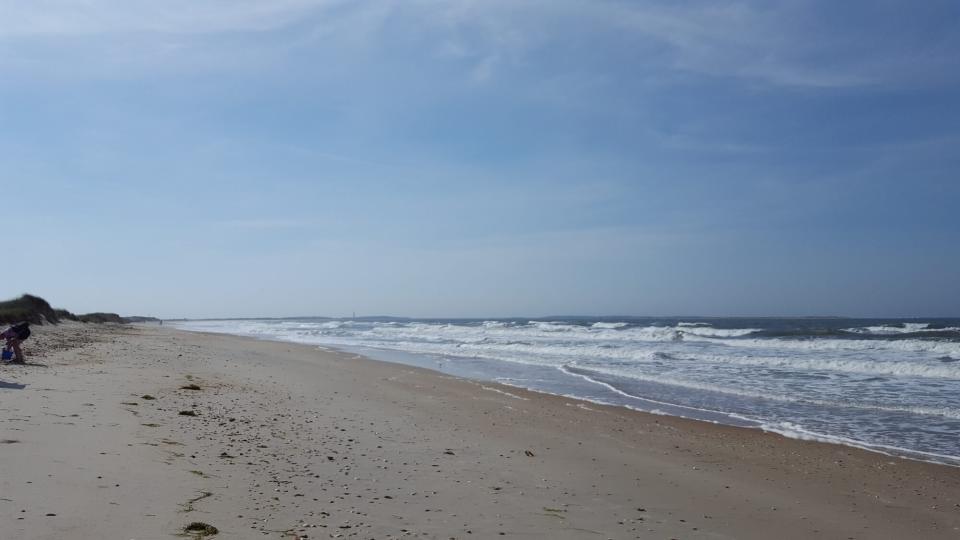Why Fall Is The Best Time For Southern Shelling

Vicky Wall
Though summer is the most popular season for leisurely beach-goers looking to enjoy the waves and soak in the sun, autumn is when the beach-combers come out. On casual expeditions or in planned group adventures, shellers mosey along the coastline, stopping to reach down in the sand when something catches their eye.
Vicky Wall has traversed North Carolina's beaches with the North Carolina Shell Club since 1984. A committed, year-round sheller whose pursuits have taken her from the South, to the Carribean's beaches, and beyond, Wall props the fall as her favorite time of year to comb the tidelines. She heads to Shackleford Banks every September with her group to see what seaside treasures she can unearth.

Vicky Wall Shackleford Banks is known for its wild horses.
It's not as though the shells come out in September. No—they'll be by the tide in some variation all year long. It's the shellers, not the presence of the shells themselves, that have unofficially assigned fall as the season of the beachcomber. Saying there's a shelling season is a bit like designating a hunting season: What you're searching for is available year-round, but in this stretch of time, the conditions make your goal a touch easier. For shelling, it has to do mostly with the weather.
"It's not as hot, so that makes it easier to be out for several hours looking for shells and the water is still warm enough to wade," says Wall. "There's fewer tourists too. It's just a nice time of year to go shell collecting."
While these conditions without the South's signature stifling heat and humidity are much more pleasant for hours spent active under the sun, good weather doesn't anticipate good finds. Sometimes the beaches are plentiful and other times the same beaches will be barren. "That's the fun of looking," Wall says. In fact, bad weather may even be an omen for better shelling. A storm, Wall says, is a good indicator of shells to come.
"After a good storm, there's a better chance of finding deep water shells that will be thrown up on the beach from the waves," Wall clues us in. "You'll just have better luck."

Vicky Wall
With this know-how, Wall has built up quite the collection. On her annual fall Shackleford trip alone, she's found whelks and wentletraps galore, along with some Scotch bonnets, North Carolina's prized state shell. She shows them off at the shell shows to other enthusiasts. Other shellers craft their collections into jewelry or home decor.
When heading to the beach this fall, Wall recommends collecting at low tide but setting your sights to the high tide line: That's where the shell debris will be. Bring along a magnifying glass to take a closer look at small, detailed shells. And remember that fall is the best time of year for Southern shelling because the weather and lack of beach traffic permits you to be out there for hours on end—shelling requires not just a keen eye, but patience too.

